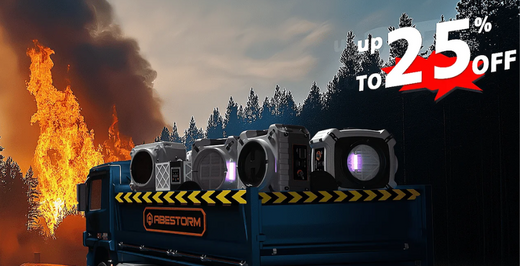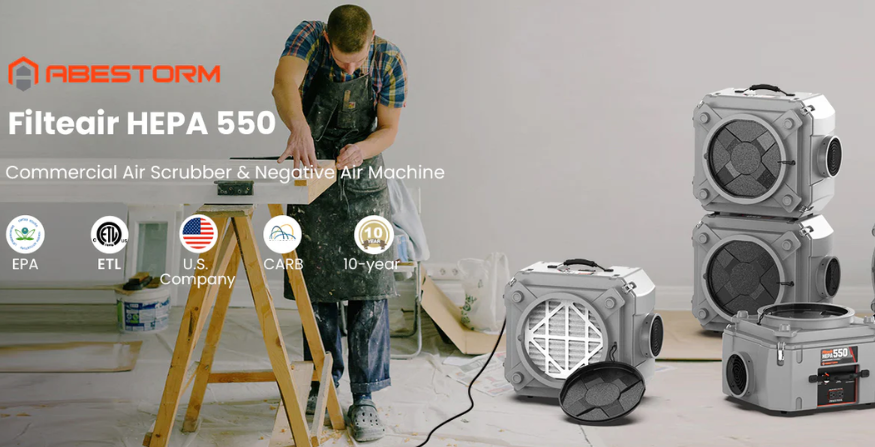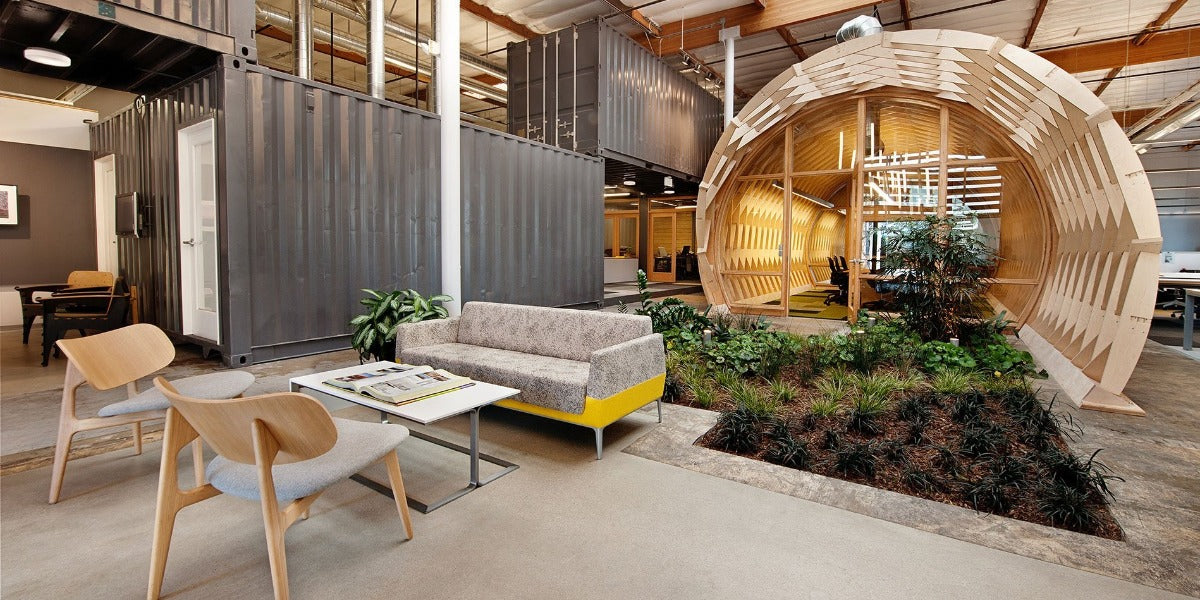The air filtration industry has been witnessing significant advancements and innovations in recent years, driven by the increasing awareness of indoor air quality and the need for cleaner environments. Here are some of the notable developments:
High-Efficiency Particulate Air (HEPA) Filters: HEPA filters have long been considered the gold standard for air purification due to their ability to remove 99.97% of particles as small as 0.3 microns. Recent innovations in HEPA filter technology have focused on improving airflow while maintaining high filtration efficiency, resulting in more energy-efficient and quieter air purifiers.
Activated Carbon Filters: Activated carbon filters are effective at removing odours, gases, and volatile organic compounds (VOCs) from the air. Advances in activated carbon filtration include the development of specialised carbon blends tailored to target specific pollutants, such as formaldehyde, ammonia, or cigarette smoke.
UV-C Light Technology: UV-C light has been increasingly integrated into air purification systems to kill bacteria, viruses, and mould spores. Innovations in UV-C technology have led to the development of compact and efficient UV-C lamps that can be incorporated into HVAC systems, air purifiers, and portable devices.
Electrostatic Precipitators: Electrostatic precipitators use an electric charge to remove particles from the air. Recent advancements in electrostatic precipitator technology have focused on enhancing efficiency, reducing ozone production, and improving reliability through the use of novel electrode materials and designs.
Photocatalytic Oxidation (PCO): PCO technology harnesses the power of UV light and a catalyst, typically titanium dioxide, to oxidize and decompose organic pollutants into harmless byproducts like carbon dioxide and water vapour. Recent innovations in PCO systems aim to enhance catalytic activity and extend the lifespan of the catalyst.
Smart Air Purifiers: The integration of smart technology into air purifiers allows users to monitor and control indoor air quality remotely through smartphone apps. Some smart air scrubbers use sensors to detect pollutants in real time and adjust filtration settings automatically for optimal performance.
Nanotechnology: Nanomaterials, such as nanofibers and nanoparticles, are being increasingly utilized in air filtration to enhance filtration efficiency and airflow while reducing pressure drop. Nanotechnology enables the development of ultrafine filters capable of capturing particles smaller than those trapped by traditional filters.
Biological Air Purification: Biological air purification systems utilise beneficial microorganisms to break down organic pollutants and neutralise odours. Recent advancements in this field include the identification and optimization of microbial strains for specific applications and the development of encapsulation techniques to enhance microbial stability and longevity.
Overall, the air filtration industry continues to evolve with a focus on improving efficiency, effectiveness, and user-friendliness to meet the growing demand for clean and healthy indoor environments.
HEPA Filtration Technology:
Filtration Efficiency: HEPA filters are designed to remove at least 99.97% of airborne particles that are 0.3 microns in diameter or larger. They are highly effective at capturing a wide range of contaminants, including dust, pollen, mould spores, pet dander, and bacteria.
Mechanism: HEPA filters work through a combination of diffusion, interception, and inertial impaction. As air passes through the dense filter media composed of randomly arranged fibres, particles are trapped by various mechanisms, preventing them from passing through the filter.
Filter Media: HEPA filters typically consist of a mat of fibreglass fibres arranged randomly to create a dense web. The fibres are usually pleated to maximize the surface area available for particle capture while minimizing airflow resistance.
Applications: HEPA filters are commonly used in cleanrooms, hospitals, laboratories, and residential air purifiers to provide high-quality air filtration and maintain clean indoor environments.
Limitations: While HEPA filters are highly efficient at capturing particles, they may not be effective against certain gases, odours, and ultrafine particles smaller than 0.3 microns. Additionally, HEPA filters require periodic replacement to maintain optimal performance.
Generally, three types of filters are used in industries Primary filters, BAG filters, HEPA filters
Primary filters
The primary filter in an HVAC system is also commonly referred to as a pre-filter or main filter. These terms are often used interchangeably.
Its main function is to trap larger airborne particles like dust, dirt, and even some allergens before they can reach the more delicate internal components of the HVAC system and pollute the air circulating throughout your room or designated area.
Here are some key characteristics of primary filters in HVAC systems:
Material: Typically made from synthetic materials like fibreglass or pleated fabric with a frame for stability.
Efficiency: They capture larger particles but are not as effective with smaller allergens or pollutants.
Maintenance: They are often disposable and require regular cleaning or replacement depending on the type and usage. Clogged filters reduce airflow and strain the HVAC system.
MERV Rating: These filters typically have a MERV rating (Minimum Efficiency Reporting Value) of 1 to 4, indicating their ability to capture larger particles.
In the world of HVAC systems, bag filters, also known as pocket filters, are reliable workhorses for air filtration. They're widely used for various purposes, keeping the air you breathe clean and protecting equipment.
Types of Duties for Bag Filters:
Prefilters: These act as the first line of defence, positioned upstream of high-efficiency filters like HEPA filters. They capture larger dust particles, saving the more expensive filters from getting clogged quickly and extending their lifespan.
Final Filters: These are the last stop for air in the air handling unit before it reaches your building. High-efficiency bag filters can trap significant amounts of particulate matter, including PM10 (particles less than 10 microns) and PM2.5 (particles less than 2.5 microns) that can impact your health.
Advantages of Bag Filters:
High Dust Capacity: Compared to other filters, bag filters can hold a lot of dust before needing replacement. This translates to less frequent maintenance for your HVAC system.
Cost-Effective: Bag filters are generally more affordable than high-efficiency filters like HEPA filters.
Versatility: They come in a range of efficiencies to suit different air quality requirements, from basic dust control to capturing finer particles in commercial or medical settings.
Superior Filtration for Cleaner Air:
Exceptional Efficiency: HEPA filters are certified to trap at least 99.97% of airborne particles as small as 0.3 microns in diameter. To put that in perspective, human hair is around 50-150 microns wide, so HEPA filters are incredibly effective at capturing microscopic particles like allergens, dust, and even some viruses. This makes them ideal for people with allergies, asthma, or other respiratory sensitivities who can breathe easier with cleaner air.
The Science Behind HEPA Filtration:
The Labyrinth Effect: HEPA filters are essentially pleated mats made from very fine fibres that are randomly arranged. This creates a labyrinthine structure, forcing airflow through a maze-like path. As air travels through these tiny channels, particles get trapped on the fibres due to several mechanisms, including interception, impaction, and diffusion.
Size Matters, But Not Everything: While HEPA filters are most efficient at capturing particles around 0.3 microns, they also effectively trap larger and smaller particles. The 0.3-micron size represents the most challenging size for a HEPA filter to catch, so its efficiency rating is based on this benchmark. Particles larger or smaller than 0.3 microns are trapped with an even higher degree of efficiency.
ULPA Filtration Technology:
Filtration Efficiency: ULPA filters offer even higher filtration efficiency compared to HEPA filters, typically removing 99.999% of particles down to 0.12 microns in size. ULPA filters are capable of capturing smaller particles than HEPA filters, making them suitable for applications requiring extremely clean air.
Mechanism: ULPA filters operate on similar principles as HEPA filters but with finer fibres and more rigorous manufacturing standards. The smaller pore size of ULPA filters enables them to capture smaller particles with higher efficiency.
Filter Media: ULPA filters utilize ultrafine glass fibres or other advanced materials to achieve the desired level of filtration efficiency. These filters are constructed with extremely tight tolerances to ensure minimal leakage and maximum particle capture.
Applications: ULPA filters are commonly used in critical environments such as semiconductor manufacturing facilities, pharmaceutical cleanrooms, aerospace facilities, and biocontainment laboratories where ultra-clean air is essential to prevent contamination.
Cost and Maintenance: ULPA filters are typically more expensive than HEPA filters due to their higher efficiency and more stringent manufacturing requirements. Additionally, ULPA filters may require specialized handling and maintenance procedures to prevent damage and maintain performance.
In summary: Both HEPA and ULPA filtration technologies are highly effective at removing airborne particles and providing clean air in various applications. The choice between HEPA and ULPA filters depends on the specific requirements of the application, including the desired level of filtration efficiency and the size range of particles to be captured.
Filterless industrial air purifiers represent a futuristic approach to air purification, aiming to provide efficient and sustainable solutions for removing contaminants from the air without the need for traditional filters. While filter-based systems like HEPA and ULPA filters are highly effective, they have limitations such as maintenance requirements, replacement costs, and environmental impact. Here are some emerging technologies and concepts in filterless industrial air purification systems:
Electrostatic Precipitators (ESP):
1. Principle: Electrostatic precipitators use an electrostatic charge to remove particles from the air. As air passes through the unit, charged plates or wires create an electrostatic field that attracts and collects particles onto oppositely charged plates or surfaces.
2. Advantages: ESPs can capture a wide range of particle sizes, including fine and ultrafine particles, without the need for disposable filters. They are highly efficient and can handle high air volumes, making them suitable for industrial applications.
3. Challenges: ESPs may produce ozone as a byproduct, which can be a concern for indoor air quality. Additionally, maintenance requirements include periodic cleaning of the collection plates to prevent buildup and maintain performance.
Plasma-Based Purification:
1. Principle: Plasma-based air purification systems generate plasma, a highly reactive gas, to neutralize and break down airborne contaminants such as bacteria, viruses, and volatile organic compounds (VOCs). Plasma can also generate ions that attach to particles, causing them to clump together and fall out of the air.
2. Advantages: Plasma-based systems offer rapid and efficient removal of contaminants without the need for filters. They can effectively target biological and chemical pollutants and may have lower maintenance requirements compared to filter-based systems.
3. Challenges: Plasma-based systems may produce ozone and other harmful byproducts if not properly controlled. There are also concerns about the potential generation of ultrafine particles as a result of the plasma process.
Photocatalytic Oxidation (PCO):
1. Principle: Photocatalytic oxidation utilizes a catalyst, typically titanium dioxide (TiO2), and ultraviolet (UV) light to oxidize and decompose organic pollutants into harmless byproducts such as carbon dioxide and water vapour.
2. Advantages: PCO systems can effectively target a wide range of organic pollutants, including odours, volatile organic compounds (VOCs), and airborne pathogens. They do not require disposable filters and can operate silently.
3. Challenges: The efficiency of PCO systems can be affected by factors such as humidity levels, UV light intensity, and the presence of certain pollutants. Additionally, the lifespan of the catalyst may degrade over time, requiring periodic replacement.
Nanotechnology-Based Filtration:
1. Principle: Nanotechnology involves the manipulation of materials at the nanoscale to enhance their properties. Nanotechnology-based filtration systems utilize nanomaterials such as nanofibers, nanoparticles, and nanocomposites to capture and remove airborne particles.
2. Advantages: Nanotechnology-based filters can offer higher filtration efficiency and lower pressure drop compared to traditional filters. They can capture particles at the molecular level and may be more durable and sustainable than conventional filter materials.
3. Challenges: The production and integration of nanomaterials into air purification systems may present technical and cost challenges. There are also concerns about the potential release of nanoparticles into the air and their impact on human health and the environment.
Molecular Air Purification:
1. Principle: Molecular air purification systems target contaminants at the molecular level using processes such as adsorption, chemical filtration, and photocatalytic oxidation. These systems can remove a wide range of pollutants, including gases, odours, and volatile organic compounds (VOCs), without the need for traditional filters.
2. Advantages: Molecular air purification systems offer comprehensive and efficient removal of contaminants without the limitations of filter-based systems. They can provide clean air in industrial environments while minimising maintenance requirements and operating costs.
3. Challenges: Molecular air purification technologies may require specialized materials, equipment, and expertise for implementation. There are also considerations regarding the control and disposal of byproducts generated during the purification process.
In summary, filterless industrial air purifiers represent a promising direction for future air purification systems, offering efficient, sustainable, and cost-effective solutions for maintaining clean and healthy indoor environments in industrial settings. However, further research, development, and validation are needed to address technical challenges, ensure safety and effectiveness, and optimize the performance of these innovative technologies.
Air Quality Monitoring and Education:
Beyond filtration hardware, there's a growing emphasis on air quality monitoring and education initiatives. Manufacturers are investing in educational resources and awareness campaigns to empower consumers with knowledge about indoor air pollutants and the importance of effective filtration. Additionally, advancements in air quality monitoring technology, such as portable sensors and smartphone apps, enable individuals to track and analyze air quality data in real time, fostering greater awareness and proactive measures for healthier living environments.









Shop For Dehumidifier